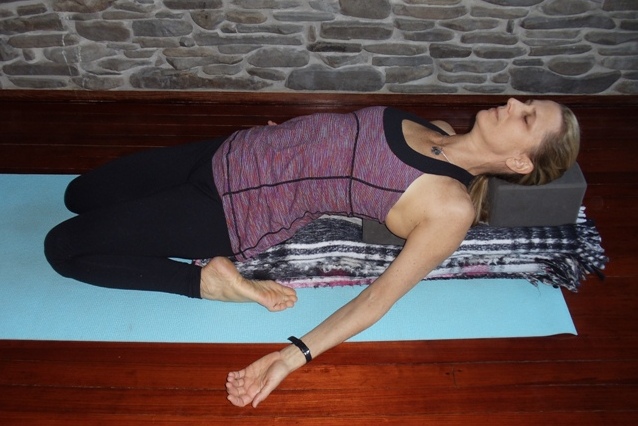Y.S. 3.9 Vyutthana nirodha samskarayoh abhibhava pradurbhavau nirodhaksana cittanvayo nirodha parinamah
Vyutthana outgoing, emerging
nirodha control, restraint
samskarayoh conscious imprints
abhibhava overpowering
pradurbhavau to manifest, appear
nirodha control, restraint
ksana instant, moment
cittanvayo connected with consciousness
nirodha control, mastery
parinamah development
Study of the silent moments between rising and restraining subliminal impressions is the transformation of consciousness towards restraint.
Y.S. 3.10 Tasya prasanta vahita samskarat
Tasya Its
prasanta peaceful
vahita flow
samskarat subliminal impressions
The restraint of rising impressions brings about an undisturbed flow of tranquility.
Y.S. 3.11 sarvarthata ekagratayoh ksayodayau cittasya samadhi parinamah
sarvarthata on all objects
ekagratayoh single-pointed focus
ksaya destruction
udaya to rise
cittasya of the mind
samadhi absolute absorption
parinamah transformation
The weakening of scattered attention and the rise of one-pointed attention in the citta is the transformation toward Samadhi.
Y.S. 3.12 Tatah punahsantauditau tulya pratyayau cittasya ekagrata parinamah
Tatah Then
punah again
santa subsiding state, quiescent state
uditau rising state
tulya similar
pratyayau cognitions, means of actions, cause
cittasya of consciousness, mind
ekagrata one-pointedness
parinamah transformation
When rising and falling thought processes are in balance, one-pointed consciousness emerges. Maintenance of awareness with keen intensity from one-pointed attention to no-pointed attentiveness is ekagrata parinama.
Commentary
The mind is made up of samskaras (subliminal imprints). There are two types of imprints: outgoing samskaras that propel the mind into any kind of activity and restraining samskaras which are activated in meditation and restrain the outgoing samskaras.
When we are too distracted by our sensory experience desire, frustration and anger can arise. These bring disorientation, dissatisfaction and a sense of being ungrounded. Through the practices of These are all external means of restraining consciousness or the samskaras, whether we focus on God, or the breath, or in asana by learning to direct and diffuse consciousness.
When the restraining samskaras are in effect, the outgoing samskaras lay dormant and vice versa. In the process of turning inward for meditation, we need to be able to change the normal state of our consciousness from one which is outwardly focused to one that is more internally focused. We begin this process by practicing the limbs of yoga: yama, niyama, asana, pranayama and pratyhara, in order to learn to control the effects of external stimuli.
A meditation practice to help restrain the outgoing mind.
This takes tapas (effort). We sit and make a commitment to stay still. One practice that helps to turn the mind inward is the practice of following the breath. In every breath there are four parts: inhalation, pause, exhalation, pause. During meditation, one can practice by focusing on the easy rise and fall of the breath. Without trying to change or shape the breath consciously, you simply begin to notice the length of each inhalation and exhalation and allow them to become even. After a few breaths draw your attention to the slight pause between the breaths. This pause is often termed “the gap”. Without grasping for the gap, notice its presence between the breaths. Sometimes it is possible to slip into that gap in meditation. Then you are in the state of restraining the samskaras. This is an early state of meditation and of the experience of Samadhi. You may experience this pause for a fraction of a second. And as soon as you notice you are in the gap, it disappears. But it is a beautiful moment when the mind is still. Often it is hard to tell how long you may have been in this gap; it could be seconds or minutes. It is the experience of the present moment just as it is. This is called ekagrata parinama. You have succeeded in transforming the mind from being distracted into one-pointed concentration.
Follow this guided meditation for relaxing the body and getting into the gap between the inhalations and exhalations where the mind is still.






